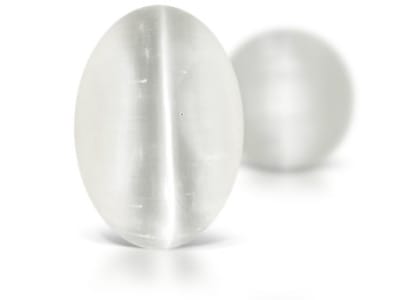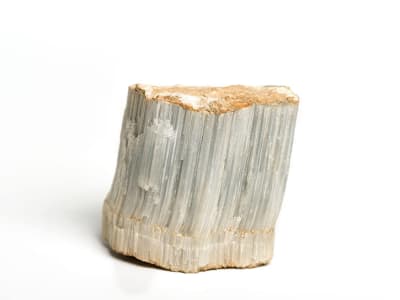Also called the "TV rock" or "television stone," ulexite is known for its unusual optical characteristics, notably its ability to transmit images through its natural fibers. A piece of writing placed underneath the stone appears on the surface of the stone! Ulexite was named for German chemist G. L. Ulex, who first correctly analyzed the species in 1850. Most specimens are milky and very poor quality, but those stones that are cut as cabochons often display a strong cat's eye effect.
General Information
Common Name
Ulexite
Species
Ulexite
Transparency
Transparent - Translucent
Dispersion
Strength: None
Refractive Index
1.491-1.520
Birefringence
0.029- 0.028
Optic Character
Biaxial
Optic Sign
Positive
Polariscope Reaction
Aggregate (AGG), Doubly Refractive (DR)
Fluorescence
SWUV: Inert to yellow, greenish yellow, white
LWUV: Inert to yellow, greenish yellow, white
LWUV: Inert to yellow, greenish yellow, white
Pleochroism
None
Hardness
2-2.5
Streak
White
Specific Gravity
1.650-1.950
Toughness
Poor
Inclusions
Ulexite has a silky luster and tightly packed parallel fibers.
Luster
Silky, Vitreous
Stability
Poor
Fracture
Uneven
Cleavage
Perfect, in one direction, Good, in one direction, Poor, in one direction
Chemical Name
hydrous sodium calcium borate
Chemical Formula
NaCaB5O6(OH)6.5H2O
Crystal System
Triclinic
Chemistry Classification
Borate
Ulexite Colors
-
 Colorless
Colorless -
 Gray
Gray -
 White
White
Alternate Names
TV Rock, Television Stone
Countries of Origin
Unknown; United States of America
Care
Avoid hot water, household chemicals, and ultrasonic cleaners

